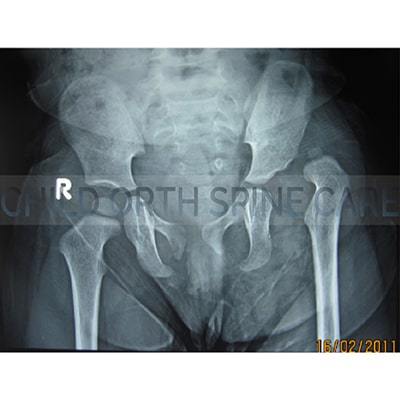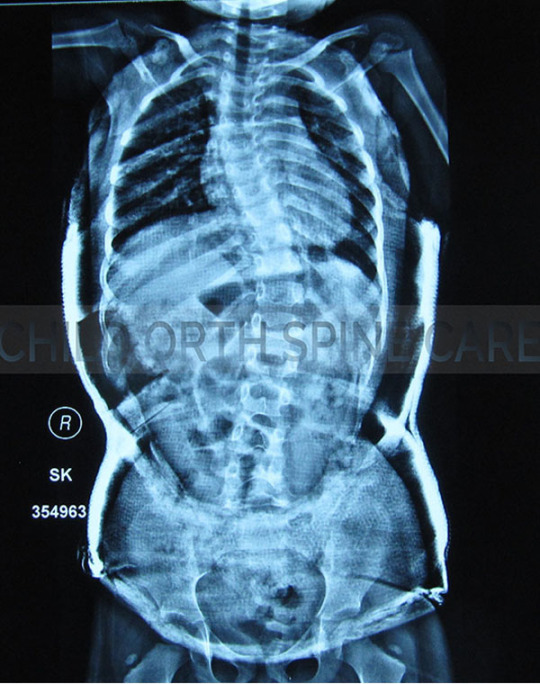#Pediatric Hip Dysplasia Surgery Hospitals in Delhi
Explore tagged Tumblr posts
Link
Best Hospitals for Pediatric Hip Dysplasia Surgery in India. Developmental pediatric dysplasia of the hip, or hip dysplasia, is the term used to depict a wide range of irregularities of the hip joint that may happen around the time of birth or amid childhood. In a healthy hip joint, the upper end of the femur (thighbone) meets the hip bone socket to fit together like a ball and cup, in which the ball pivots unreservedly in the space. Contact us for more information.

#Pediatric Hip Dysplasia Surgery in India#Pediatric Hip Dysplasia Surgery in Delhi#Pediatric Hip Dysplasia Surgery Doctors in India#Pediatric Hip Dysplasia Surgery Doctors in Delhi#Pediatric Hip Dysplasia Surgery Hospitals in India#Pediatric Hip Dysplasia Surgery Hospitals in Delhi
0 notes
Text
Children's Orthopedic and Spine Care Clinic
Dr. Sanjay Sarup is the founder of Children’s Orthopaedic & Spine Care Clinic.
Currently he is the director of Pediatrics Orthopaedic Spine Surgery at Artemis Hospital, Gurgaon.
He is also the head of one of the Orthopaedic units in the hospital.
He is post graduate and thesis guide in DNB program in hospital.
He has 30 years of experience and during this period he has treated patients from all over India and from abroad.
He has operated more than 20000 children for various orthopaedic problems of the limbs and the spine.
Our children's orthopedic and spine care clinic tries to offer:-
Dedicated to giving our young patients the finest treatment possible.
For the treatment of various musculoskeletal injuries and disorders, we provide the most up-to-date methods.
We offer medical guidance that adheres to best practice guidelines.
Our surgeons are continuously working to give our patients with musculoskeletal issues the best care they can get.
Our special expertise in the treatments of :-
Hip surgery- Dysplasia, Dislocation, Hip- Preservation
Spine Surgery- Scoliosis, Kyphosis
Limb Lengthening and Height Gain procedures
Congenital deformity- Club foot
Pediatric Orthopedics
With 30 years of practice, 23000 surgeries, a clinic that has been open since 2001, and patients from many various countries. Our Dr. Sanjay Sarup has treated patients from all over the world.
Nationalities Treated:-

HIP DYSPLASIA


Hip development dysplasia is known as DDH, while congenital hip dislocation is known as CDH.
A sizable number of youngsters from Central Asia, from neighbouring nations, from the Middle East, and from Africa
have been successfully treated by Dr. Sanjay Sarup.
To lessen the shock of surgery and lower the rate of avascular necrosis, he invented the innovative arthroscopic technique DDH.
His patients have engaged in all forms of physical activity, as well as dance and sporting events. Most of them have a normal life now.
SCOLIOSIS


At our clinic Scoliosis treatment is done with and without surgery.
Scoliosis Treatment without surgery includes:
Observation,
Cast application,
Bracing,
Exercises
Scoliosis Treatment with surgery includes:
Growing rod surgery,
Magnetic growing rod surgery
LIMB LENGTHENING AND HEIGHT GAIN PROCEDURE


By Limb Lengthening process our upper and lower limbs are made longer.
Lengthening of limb can be needed because one limb is shorter than the other.
There are many reasons for the short limb of one side like: Congenital condition – Hemimelia, or Congenital shortening of the Femur(Thigh bone),
Cessation of growth (a growth arrest) – Infection and Injury. A deformity often accompanies the shortening in these cases.
CLUB FOOT


Congenital Talipes Equino Varus, or CTEV.
Clubfoot is treated surgically and with a DBS (Dennis Browne Splint) at our facility.
All youngsters who received club foot treatment at our clinic have recovered completely. They are free from constraints and are able to play all games, engage in sports, and dance.
They all live contented, everyday lives
CONTACT US
Address Director, COSC At Artemis Hospital, Sector 51 Gurgaon, National capital region of Delhi
Phone 919810336332
Email [email protected]
Mon – Sat (08:30 – 6:00) Sunday closed
#surgery#gurgaon#hipdysplasia#Clubfoot#Ponsetimethod#clubfootstretches#scoliosis#leglengthening#limblengthening#doctorsanjaysarup#scoliosistreatmentinGurgaon#ctevsurgeryingurgaon#childddhsurgeryinGurgaon#ponseticlubfoottreatmentinGurgaon#ctevtreatmentingurgaon#hipdysplasiatreatmentinGurgaon#childrenspineclinicinGurgaon#surgeryforclubfootinGurgaon#cosmeticheightgainsurgeryinGurgaon#childddhtreatmentinGurgaon#orthopedics#orthopedicsurgery#pediatricorthopedics#pediatrics
0 notes
Text
Hip Arthroscopy- All You Need to Know

This was probably the area of Hip Surgery that presented the biggest and most expressive evolution in the last years.
The term arthroscopy in Delhi refers to a surgical technique, the act of “looking at the joint”. It is a method, a means of carrying out a treatment. It allows different procedures to be performed on or near the joint.
This is possible through the use of micro-cameras and special instruments, of small caliber, that give us access to the interior of the joints without the need for surgical accesses of traditional surgeries.
In arthroscopy, we use cutaneous incisions of about one centimeter each, in varying numbers – usually from 2 to 4 accessions, explains the orthopaedic in Delhi.
What can be treated by hip arthroscopy in Delhi?
The most frequent indications are:
Femoral-acetabular impact: for bone and cartilage remodeling (osteochondroplasty).
Lesions of the acetabular Labrum: for its resection or reinsertion to the bone bed with the use of anchors.
Other indications include:
Snap in hip.
Removal of free bodies or foreign bodies from the joint.
Repair of injuries to the gluteal tendons and lateral hip pain syndrome.
Treatment of traumatic and atraumatic cartilage lesions.
Lesions of the round ligament.
Osteochondritis dissecans.
Synovectomy: for rheumatoid arthritis or villonodular synovitis.
Deep gluteal pain syndrome or piriformis syndrome: to release the sciatic nerve.
Some sequelae of pediatric pathologies, such as Legg-Perthes: for removal of free bodies or chondroplasty.
Can my case be treated by arthroscopy in Delhi?
Through clinical evaluation and imaging tests we can define who will benefit or not from this type of treatment.
Although this surgery is extremely versatile, not all hip injuries can be treated in this way.
Cases of major morphological changes, hip dysplasia and osteoarthritis, for example, are likely to be better treated through conventional surgery, when indicated.
Although common sense is that arthroscopy in Dwarka is “better and more modern”, this is not always true. Each case has its indication. In some cases, traditional surgery may bring more benefits.
The indication of treatment must be decided on a case-by-case basis by the orthopaedic doctor in Delhi.
How is the surgery?
Surgery can be performed with spinal anesthesia and sedation or under general anesthesia.
To gain access to the hip joint, it is necessary to use an orthopedic traction table, under anesthesia, creating space in the joint for the insertion of optics and instruments.
In addition to the video material, we also use a radioscopy device, which is a kind of “live” radiography.
After making the access portals, we introduced the micro-camera and we can use a wide variety of tweezers to correct injuries, sutures, scrapes, micro-perforations, etc.
The instruments used in hip arthroscopy are specific to this surgery, being longer than the material traditionally used for knee and shoulder, for example.
We also have flexible instruments that can deviate from the femoral head and increase our range within the joint, however, the shape and location of the hip imposes a natural limit on the range of the instruments, explains the orthopaedic surgeon in Delhi.
What are the risks?
As with any surgical procedure, there are risks involved.
In addition to the “general” risks, such as: anesthetic risk and infection, there are also specific risks of arthroscopic treatment, especially paresthesias (alteration of sensitivity) in the inguinal region or skin problems, among others. The evolution of technique and materials has fortunately made these problems increasingly rare.
In addition, as with all endoscopic surgery, there may always be a need for conversion to traditional surgery (“open air”).
How is recovery after surgery?
According to the severity of the injury and the treatment instituted, specific physiotherapy protocols are initiated. The use of crutches is necessary for two to six weeks and the return to sports is allowed according to the type of injury, the type of sport and the individual recovery. Final recovery can take anywhere from six months to a year, states the orthopaedic surgeon in Delhi.
It is usually necessary to stay in the hospital for a day for post-anesthetic recovery and the postoperative period is generally not very painful.
Will I never have hip pain again? Can I go back to sports?
Statistically up to 80% of patients are able to resume their sports activities with at least partial relief of symptoms.
In practice, each case is different. Depending on the problem you had in your hip, arthroscopy can only be palliative, in an attempt to preserve your joint. In some situations, it may be more prudent to abandon impact sports altogether.
Eventually the symptoms may remain or appear again after a while. You should inquire about the details of your case with your orthopaedic surgeon in Dwarka.
In our practice, we observed the best results in those patients who obtained an earlier diagnosis and in small lesions, without compromising cartilage.
For this reason, you should not neglect your symptoms, in case of pain in the groin or hip always look for an orthopaedic in Delhi.
#arthroscopy in Delhi#arthroscopy in Dwarka#orthopaedic surgeon in Delhi#orthopaedic surgeon in Dwarka#orthopaedic in Delhi#orthopaedic doctor in Delhi
0 notes